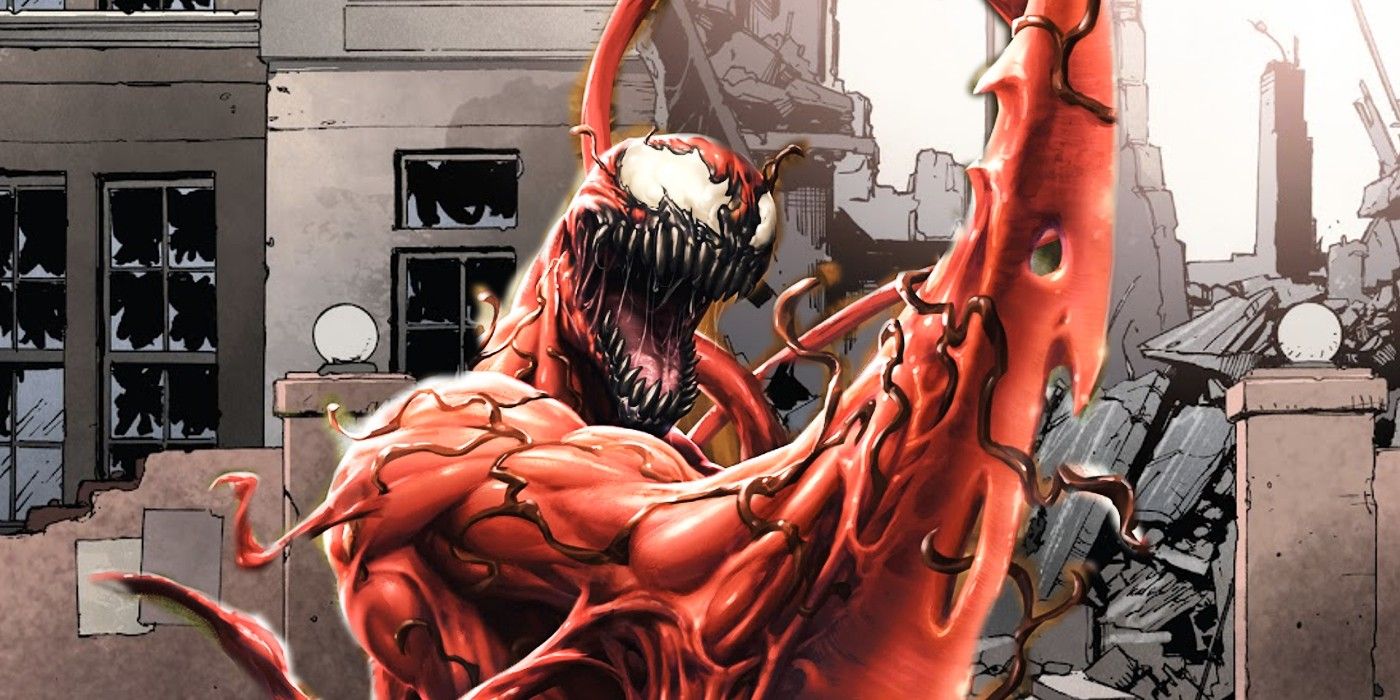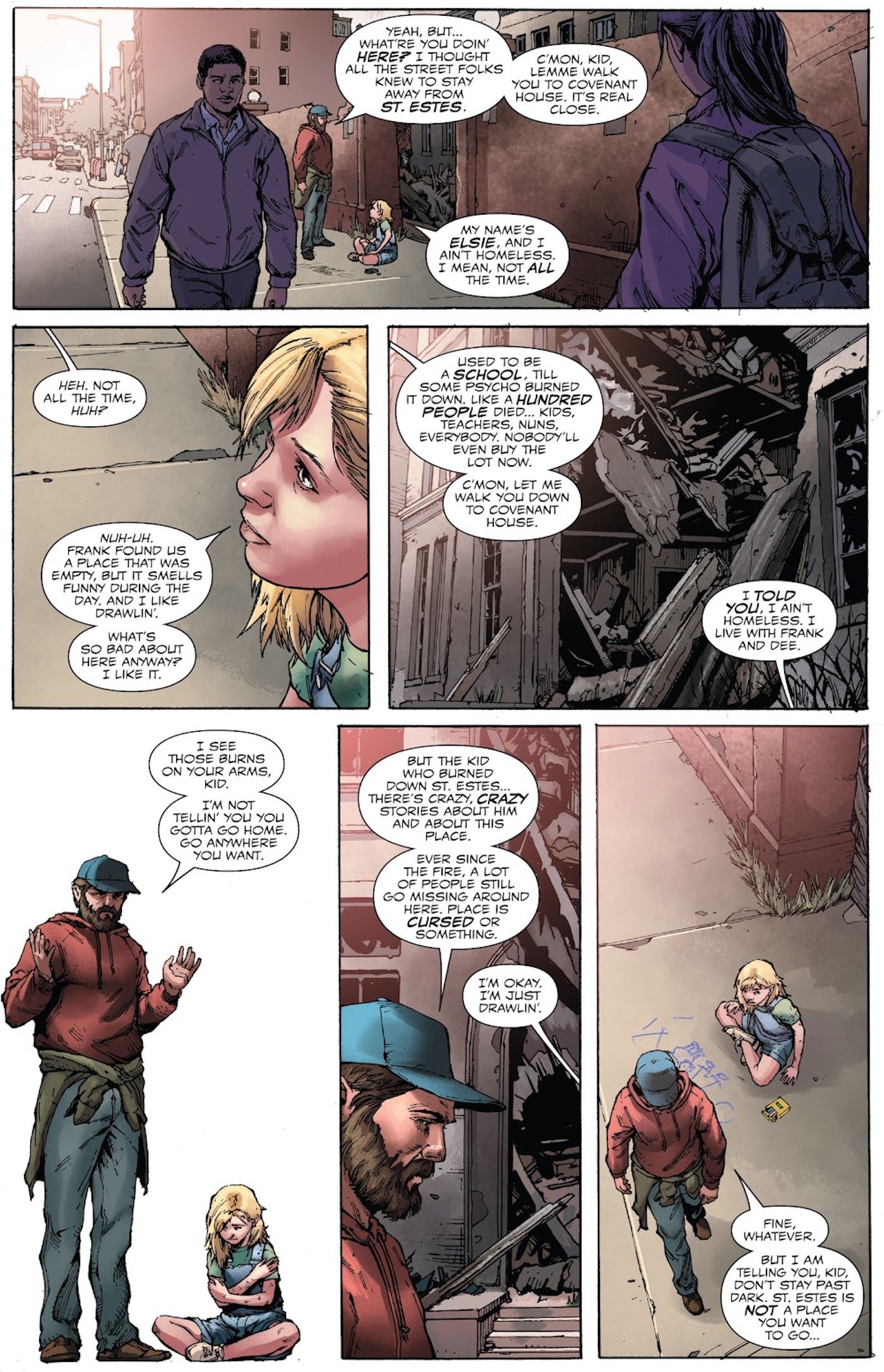
Warning! Spoilers for Carnage Forever #1 ahead!
As one of the most vicious killers in the Marvel Universe, it's difficult to imagine anyone forgetting about Cletus Kasady, the symbiote host better known as Carnage. Yet while a new series has launched featuring the deranged villain, it seems that the Marvel Universe has largely forgotten about the character's humble roots. While the story of the symbiote species has evolved from "alien life-form" to "beings of primordial darkness," no one in Marvel's New York seems to have paid much attention to the story of this particular symbiote; particularly, to the ruined orphanage of St. Estes, the humble and now dilapidated place Carnage once again calls home.
Carnage is more than just a red version of Venom. Debuting in Amazing Spider-Man #344 by David Michelinie and Erik Larsen, he began as a human serial killer Cletus Kasady, who had the misfortune of being cellmates with Eddie Brock, the host of the Venom symbiote. When Eddie and the symbiote reunited and escaped, some of the symbiote stayed behind and bonded with Kasady through his blood, imbuing him with deadly power and his signature red hue. Now going by the name Carnage, they went on a terrifying killing spree before ultimately being stopped by Spider-Man. While Kasady's physical form was eventually destroyed, Carnage's combined psyche was preserved in the symbiote hive mind and has since re-emerged as an entity in its own right.
As for the St. Estes Home for Boys, the orphanage is a critical location in Carnage's life. First appearing in Amazing Spider-Man #361 by David Michelinie and Mark Bagley, it is the home where Cletus Kasady grew up - and first displayed his capacity for terrible violence by later burning it down. It also serves as a second birthplace for Carnage, hosting his first confrontation with Spider-Man. In Carnage Forever #1 by Phillip Kennedy Johnson and Edgar Salazar, Carnage haunts the ruined building, leading to rumors of disappearances and monsters in the wreckage.

But why is St. Estes still a ruin? The mansion made its comic debut in 1992. While the Marvel timeline is certainly a malleable thing, enough time has certainly passed in-universe for someone to notice the ruined Brooklyn property. Instead, St. Estes has only appeared in the comics as memories and flashbacks when a point needs to be made about Carnage's origins. The appearance in Carnage Forever #1 is its first actual in-comic appearance since 1992, and the building appears to be unchanged from that dramatic confrontation. While the surrounding neighborhood is alluded to be rough, it's still evidently calm enough for three drunken grad students to walk through at night (until their implied deaths at Carnage's hand). This issue is no flashback, either - when looking at a potential new host, Carnage muses that he "lost his last one," referencing the death of Kasady's body. For all intents and purposes, it is as though the Marvel Universe simply forgot about St. Estes until the time called for it to appear again.
It's unusual to see a villain's birthplace neglected for so long. Carnage has certainly had an impact on the Marvel Universe during his tenure, often forcing heroes and villains alike to join forces, teaming up just to put an end to his murderous rampages - but few stories have paid homage to his place of birth. Finally, with Carnage Forever #1, St. Estes is back in the spotlight once more. Although Carnage now has a terrifying new host, he continues to lurk around the ruins of St. Estes, reminding fans that he has never forgotten where his real origin lies.
from ScreenRant - Feed https://ift.tt/O4QdFyE
via IFTTT


0 Comments